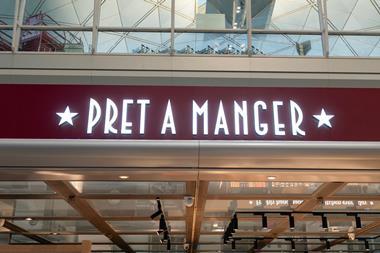Sainsbury’s and Walmart, owner of Asda, have this morning (30 April) released details of plans to merge the two UK supermarket chains.
The companies have said both brands will be retained and that there are no planned store closures as a result of the combination.
The merger would result in a “more competitive and more resilient business that will be better able to invest in price, quality, range and the technology to create more flexible ways for customers to shop”.
Plans to combine the retailers follows a shake-up in the grocery category, with the rapid growth of Aldi and Lidl eating into the market share of traditional supermarkets.
The companies said the merger would:
- Create “significant opportunities for suppliers to develop differentiated product ranges, become more streamlined and to grow their businesses as the combined Business grows”;
- Combine more than 2,800 Sainsbury’s, Asda and Argos stores, and retail websites, with a combined 47 million customer transactions per week;
- Create a grocery, general merchandise and clothing retail group with combined revenues of around £51bn for 2017;
- Maintain the Sainsbury’s and Asda brands, while enabling them to “sharpen their distinctive customer propositions and attract new customers”;
- Enable investment in price, quality, range and creating more flexible ways to shop in stores and through digital channels;
- Lower prices by around 10% on “many of the products customers buy regularly”;
- Generate net EBITDA synergies across the enlarged group of at least £500m. These will be comprised largely of buying benefits, opening Argos in Asda stores and operational efficiencies;
- Deliver benefits to the combined business through a close relationship with Walmart, allowing the business to share knowledge and technology developments between Walmart, Sainsbury’s and Asda;
- Offer opportunities for more than 330,000 staff at all levels within the group;
- Deliver substantial value for shareholders of Sainsbury’s;
- Benefit from Asda’s high freehold property ownership and pension-free balance sheet.
The combined business would be chaired by Sainsbury’s chairman and led by the Sainsbury’s CEO and CFO, while Asda would continue to be run from Leeds with its own CEO.
“We believe the combination of Sainsbury’s and Asda will create substantial value for our shareholders and will be excellent news for our customers and our colleagues,” said Sainsbury’s chairman David Tyler. “The proposal will bring together two of the most experienced and talented management teams in retail at a time when the industry is undergoing rapid change.”
Sainsbury’s CEO Mike Coupe added that the combined business would be more competitive and give customers “more of what they want now and in the future”.
“Having worked at Asda before Sainsbury’s, I understand the culture and the businesses well and believe they are the best possible fit,” he said.
Asda would “continue to be Asda”, stated the retailer’s CEO Roger Burnley: “The combination of Asda and Sainsbury’s into a single retailing group will be great news for Asda customers, allowing us to deliver even lower prices in-store and even greater choice.”
“From my six years with Asda and 10 years with Sainsbury’s, I know first-hand that both organisations are fortunate to employ some of the most talented and customer-focused colleagues in this market and I am excited by the opportunity of the two coming together.”
































No comments yet